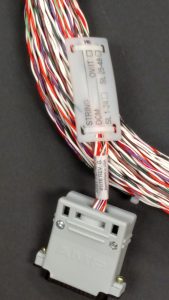Understanding The Difference Between A Cable Assembly Vs. Wire Harness

In a previous post, we discussed just a handful of the reasons that it’s smart to hire a commercial wiring company like Paradise Cable Industries. In addition to proper organization, there’s adherence to safety regulations and increased efficiency to think about. The need for custom cables and wire harnesses is another reason that it pays to hire the professionals.
With our vast collection of custom manufactured products, each made on fully-automated machines with tight quality control, you can be sure that we’ll have the right product on hand right when you need it. Cable assemblies and wire harnesses are two of our most in-demand products, and in this post, we’ll compare and contrast their functionalities.
What Is A Cable Assembly?
During many wiring and custom cable projects, it’s necessary to route a group of wires around obstacles. Accomplishing this logistical feat is made much easier with a cable assembly. This particular piece features multiple wires or cables covered by an insulating material, such as shrink-wrapped thermoplastic, thermoplastic rubber, or vinyl. In this way, both the cables and the user are protected, while making it easy to maneuver wires around corners or between server cabinets.
What Is A Wire Harness?
Unlike a cable assembly, which is meant to make it easier to handle groups of wires or cables, a wire harness is utilized for single wires. Covered by a single layer of exterior covering, a wire harness uses shrink-wrapped thermoplastic, thermoplastic rubber, or vinyl to protect any technicians who might need to handle the wire, but does little to keep out environmental contamination. Wire harnesses are often employed in situations where the temperature, dust, moisture, and friction aren’t a major concern.
Are you in need of cable assemblies, wire harnesses, or other equipment that’s necessary for custom cable projects? Contact Paradise Cable Industries for more information on our entire catalog of wire and cable products.

Recent Comments